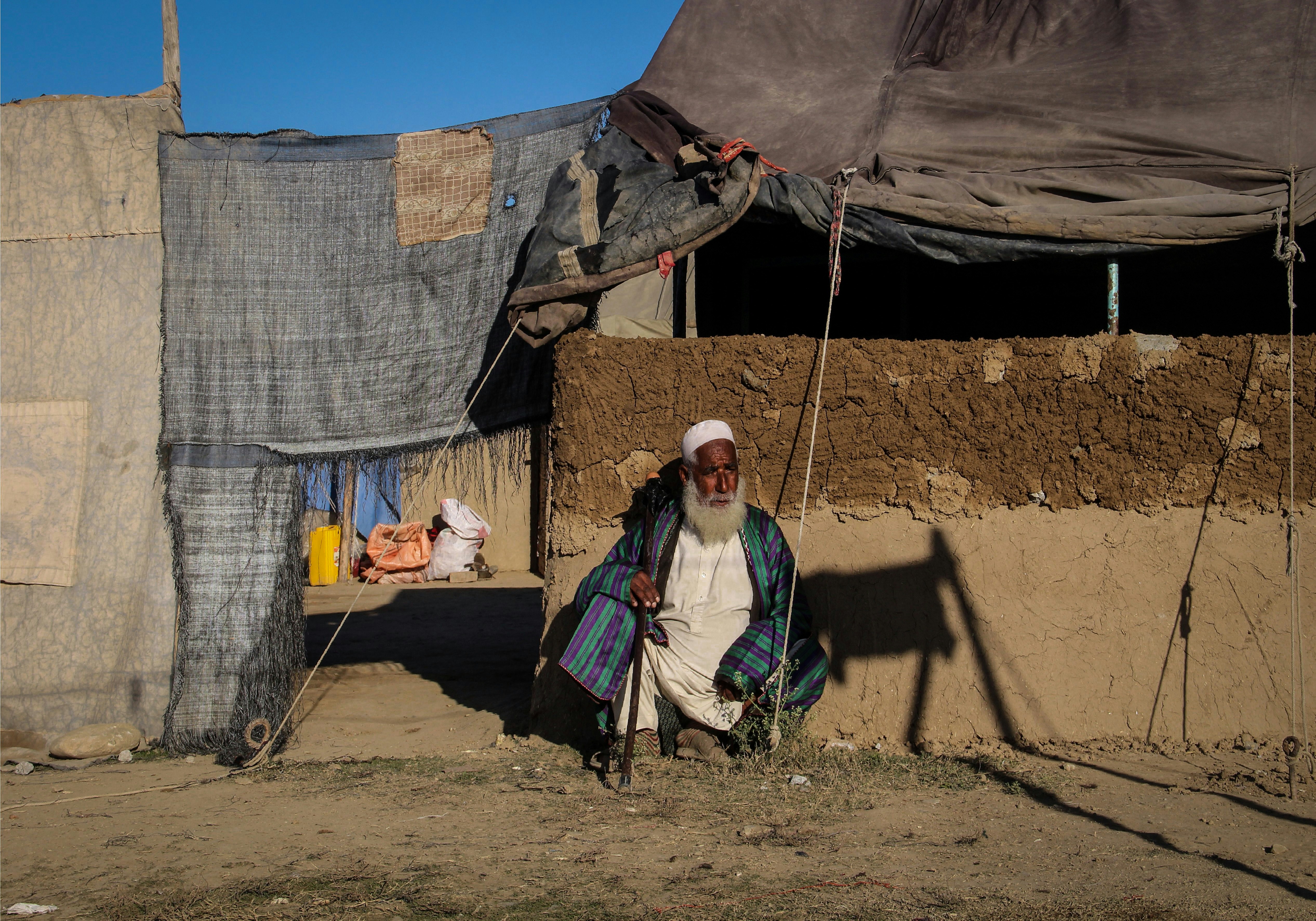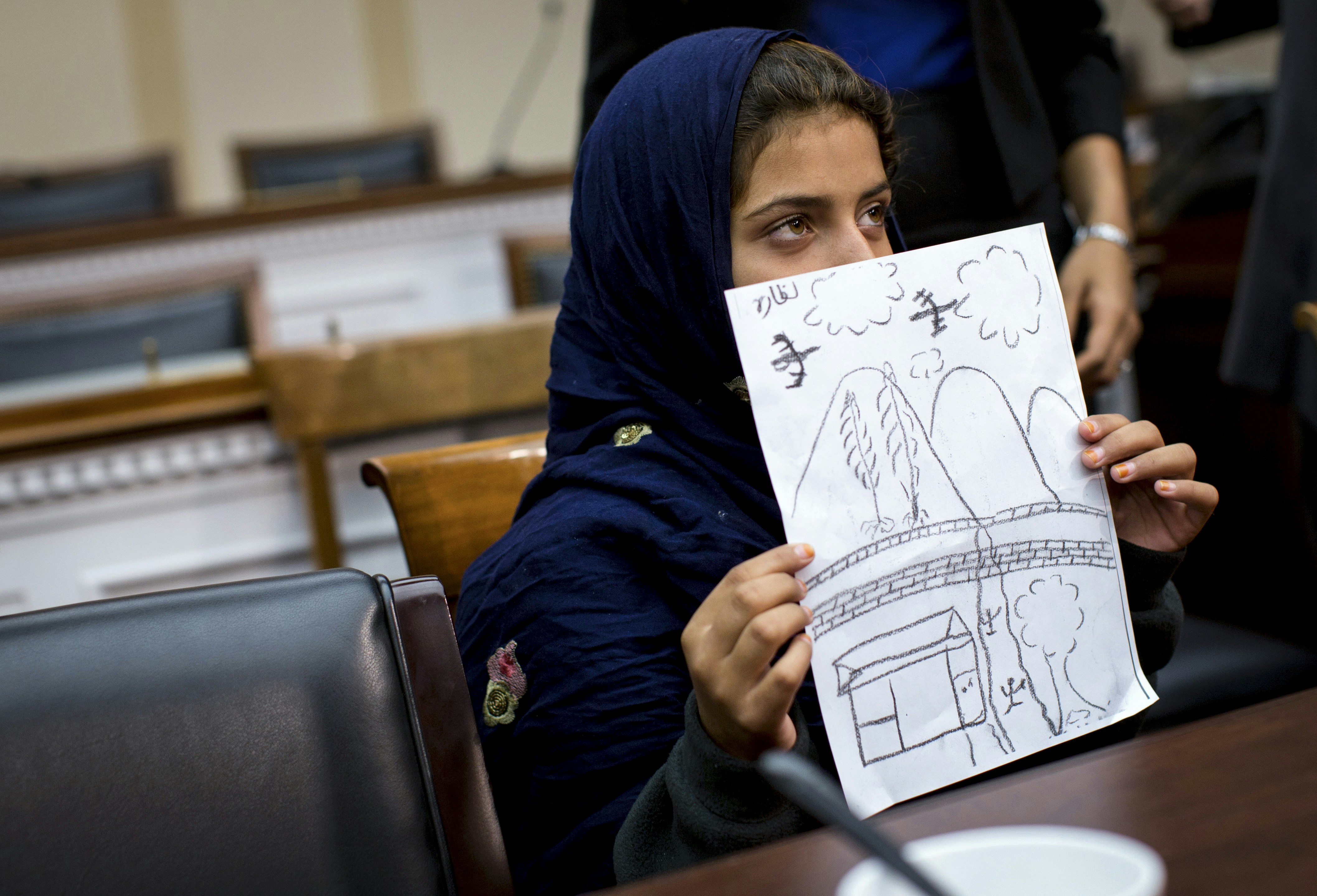So, let’s tell the truth about America. The truth is that, through a worldwide drone war we commenced two decades ago, we’ve invented a new form of terror for millions of people across the world. The truth is that we continued to escalate this war in 2019, yet there’s no way to say exactly how much, because the U.S. government refuses to tell its citizens the basic facts about it. The truth is that the best sources of information on this war are two underfunded outfits — the Bureau of Investigative Journalism and Airwars— that aren’t even based in the United States.
The truth is that these journalists can’t be sure which airstrikes are being carried out by drones and which by conventional manned aircraft. The truth is that our drone war is like some underseas leviathan, the nature and size of which we can only guess at when parts of it briefly surface.
The truth that is our fleet of killer drones is likely aloft on Christmas Day, right now, circling endlessly as intelligence analysts decide whether to pronounce a death sentence on people thousands of miles away. The truth is that, as we open presents, these death machines might as well — for all the space they occupy in our consciousness — not exist at all. The truth is that there have been six Democratic presidential debates this year, and during these six debates, the number of times our worldwide drone war was debated is zero.

Photo: Farid Zahir/AFP via Getty Images
This was horrific enough to merit a brief article in the New York Times. It was so bad, in fact, that the article included Malana’s name. It was not bad enough for it to include the names of America’s four other victims.
Eighteen years after September 11, 2001, this is the pattern with our drone war: The worst of the atrocities briefly make an appearance in the media. “We are aware of the allegations of civilian casualties and working with local authorities to determine the veracity of these claims,” Col. Sonny Leggett, a military spokesperson, said about Malana’s death. The news flits across the screen that 30 Afghan pine-nut farmers were killed by a U.S. drone strike. “We are aware of allegations of the death of noncombatants and are working with local officials to determine the facts,” Leggett said about them.
Then for Americans, the murders subside into the electronic maelstrom, never to be heard of again. (The Pentagon did not respond to a request for comment on whether any progress has been made in the investigation of the death of Malana.)
For the most part, our drone war grinds on with no notice taken here at all. Meanwhile, people in an uncertain number of countries live under the unblinking gaze of drones. We can say that the military’s overt program has conducted drone strikes in Afghanistan, Pakistan, Iraq, Yemen, Somalia, Syria, and Libya. In addition, the CIA has a classified program that it does not acknowledge. Through news coverage, we know of alleged CIA strikes in Pakistan, Somalia, Yemen, Afghanistan, and beyond. (Oddly, the New York Times reported in 2017 that the CIA, sensing opportunity as the Trump administration began, sought to expand its operations into Afghanistan for “the first time.”) CIA strikes may be spreading further into West Africa, as the CIA runs counterterrorism missions out of Niger and Somalia.
Once upon a time, humans killed each other with rocks, close up. Then swords, then guns, then planes. But even with bombing campaigns of the past, there were humans up there, and eventually they had to fly away. Today, swaths of countries live under drones monitoring them around the clock. Their constant, distant humming quietly informs the people beneath them that they and everyone around them might be killed at any time by invisible strangers across an ocean.
“From the ground, it is impossible to determine who or what they are tracking as they circle overhead,” according to David Rohde, who was kidnapped and held captive for months by the Taliban. “The buzz of a distant propeller is a constant reminder of imminent death. Drones fire missiles that travel faster than the speed of sound. A drone’s victim never hears the missile that kills him.”
“When [children] hear the drones, they get really scared, and they can hear them all the time so they’re always fearful that the drone is going to attack them,” explained a man in Pakistan who collected his cousin’s body after a drone strike. “Because of the noise, we’re psychologically disturbed — women, men, and children. … Twenty-four hours, [a] person is in stress and there is pain in his head.”

Nine-year-old Nabila Rehman holds a drawing she made depicting a drone strike that killed her grandmother in Pakistan, during a news conference on Capitol Hill in Washington, D.C., on Oct. 29, 2013.
Photo: Evan Vucci/AP
The use of drones strikes grew slowly for the rest of President George W. Bush’s administration. Then Barack Obama took office and dramatically escalated the program. Just three days after taking office, Obama approved two strikes in Pakistan. One of them, according to the book “Kill or Capture,” hit the wrong target: the home of a village elder who belonged to a “pro-government peace committee.” He was killed, along with four other members of his family, two of them his children.
This did not dissuade Obama. He authorized as many CIA drone attacks during his initial nine and a half months in office as Bush did in his final three years.
Four years ago, in 2015, The Intercept published “The Drone Papers,” based on a large cache of leaked classified documents. That reporting provided, for the first time, a glimpse into Obama’s secretive kill list and assassination program. It was shocking, for anyone with the capacity to be shocked.
The Obama administration eventually released official numbers for its drone program. Between the time Obama took office until the end of 2015, it said, the U.S. killed 2,436 people in Pakistan, Yemen, Somalia, and Libya. Between 64 and 116 were civilians. That official civilian death toll appears low, and that was the point. From the “Drone Papers” reporting, we learned that the U.S. policy was to declare anyone killed in those strikes as an “enemy killed in action,” or EKIA. They remained on the books as such, unless posthumously proven otherwise. One of the leaked documents revealed that according to the Pentagon’s own numbers, nine out of 10 people killed in “Operation Haymaker” in Afghanistan during a five-month period were not the “intended targets.”
The president, according to Obama, could even kill American citizens by drone with no judicial review.
The Bureau of Investigative Journalism estimated a somewhat higher total toll: 2,753 people. But the number of civilians killed, it determined, was six times higher than what the Obama administration claimed.
Most significantly, Obama did not create a legal framework that placed any outside restrictions on the executive branch’s use of drones. The president, according to Obama, could even kill American citizens by drone with no judicial review. The theory, to the degree there was one, held that U.S. presidents would always be trustworthy enough to use this power wisely. Then Donald Trump was elected — and inherited all that power.
On November 11, 2016, the week after Trump became president-elect, a documentary on U.S. drone warfare, “National Bird,” was released. A young man, only called Daniel, is prominently featured in the film. As a former signals intelligence analyst, he describes on camera his deep frustration with the inability to really tell who was killed in these drone strikes.
“When it comes to high-value targeting, every mission is to go after one person at a time. But anybody else that’s killed in that strike is just blatantly assumed to be an associate of the targeted individual,” Daniel explains. Under the rules of engagement, he says, anyone who appears to be male and over the age of 16 is a legitimate target: “If that strike occurs and kills all of them, they just say that they got ’em all.”
This past May, Daniel Everett Hale was charged in an Alexandria, Virginia court under the Espionage Act with sharing classified material regarding the drone program with a reporter. While the indictment does not name a news organization, Trump administration officials, in leaks to reporters, linked Hale to The Intercept’s reporting. Hale sought to have the case dismissed by arguing that the Espionage Act suppressed the freedom of the press. This month, the Associated Press reported that a judge has allowed prosecutors to move forward with their case against him.
Under his current charges, Hale faces up to 50 years in prison.

Photo: John Moore/Getty Images
Through executive order, Trump has made drone strikes less transparent by eliminating an Obama-era mandate that compelled the Defense Department to report its civilian death toll estimate every year. The New York Times described this as a move that increases “the secrecy that cloaks one of the most contentious aspects of the fight against terrorists.”
What we do know is that the Bureau of Investigative Journalism estimates that the U.S. carried out about 1,000 airstrikes in Afghanistan, Pakistan, Somalia, and Yemen in 2016 — that is, strikes by both drones and manned aircraft. So far in 2019, they believe that the U.S. has conducted 5,425 airstrikes, five times as many. In the month of September, the U.S. upped the pace to almost 40 airstrikes per day.
That brings us to where we are today.
Even the left wing of the leading presidential hopefuls would keep at least some parts of the status quo alive. Sen. Bernie Sanders, I-Vt., has not ruled out drone strikes. In 2015, he endorsed their use to assassinate “important terrorists.” This year, in response to an American Civil Liberties Union survey, Sanders answered that he would issue an executive order prohibiting the CIA from conducting drone strikes, giving the responsibility exclusively to the military.
Sen. Elizabeth Warren, D-Mass., went further, explaining that “we must also dramatically curtail their use, institute protections to prevent civilian casualties; and provide maximum transparency when they do occur.” South Bend, Indiana Mayor Pete Buttigieg responded that he would not forbid the CIA from conducting drone strikes because “it is imprudent to be unflinchingly categorical when it comes to dynamic national security challenges.” Former Vice President Joe Biden did not answer the survey at all.
During last week’s Democratic presidential debate, the candidates were asked specifically about U.S. foreign policy in Afghanistan. Not a single question or response mentioned increased drone strikes and conventional airstrikes, the loss of civilian life, or recent reporting on abuses seen at the hands of CIA-backed Afghan militia units.
Enjoy the twinkling lights today — the gingerbread houses, carols, gifts, and being around those you love. That’s part of the truth of America.
Please, though, do what you can to consider other truths about ourselves. Try to face the reality that there are people on the other side of the world today that, because of us, are experiencing a type of dread that has never existed in America. Try to imagine being surrounded by your family, all of you filled with acid anxiety about the buzzing far overhead, the persistent staring eye above your home, that may at any moment obliterate you and everything you love.
That likely won’t make it a merry Christmas. But it will make it something far more meaningful: an honest one.
Elise Swain | Radio Free (2019-12-25T10:00:20+00:00) Merry Christmas, America! Let’s Remember the Children that Live in Fear of Our Killer Drones.. Retrieved from https://www.radiofree.org/2019/12/25/merry-christmas-america-lets-remember-the-children-that-live-in-fear-of-our-killer-drones/
Please log in to upload a file.
There are no updates yet.
Click the Upload button above to add an update.